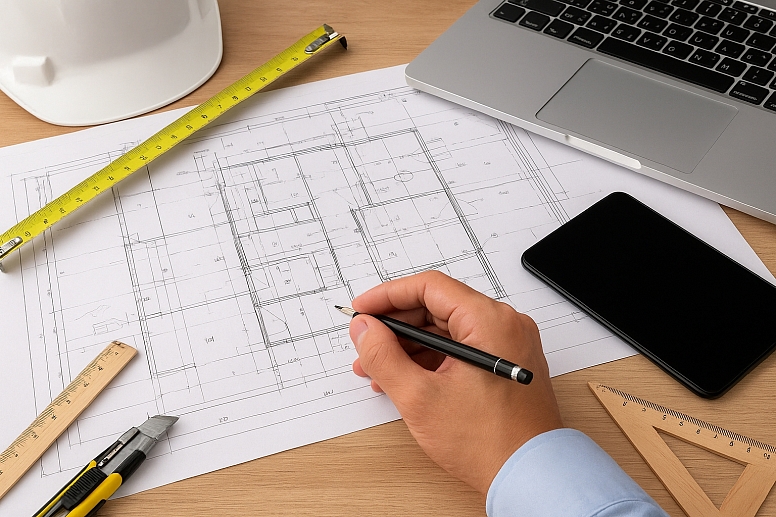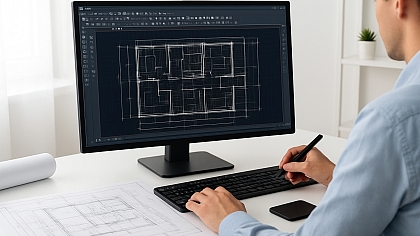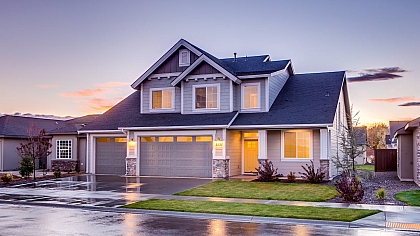
Top 5 Takeoff Software Trends Reshaping Construction in 2025
Bid windows are tighter, addenda arrive late, and teams are expected to price more work with the same headcount. Takeoff Software now sits at the center of that pressure. In 2025, the best teams treat it as a living source of quantities that flows into estimating, buyout, and schedule planning. If you still trace lines by hand or pass around static spreadsheets, you leave speed and accuracy on the table.
Below are five trends that matter right now, how they change the day-to-day, and simple steps to try this quarter. You will see takeoff software referenced throughout because it anchors each trend.
1) AI in Takeoff Software: from clicks to decisions
AI no longer just assists. It recognizes scope, extracts quantities, and flags anomalies that deserve human judgment.
Why it matters:
-
Fewer manual traces
-
Consistent quantity logic across estimators and bids
-
Faster bid turnarounds
Try this:
-
Pilot one trade. Build a short QA checklist that pairs AI output with a two-minute human scan.
-
Standardize sheet naming and layers so the model sees patterns it can learn.
-
Tag misses and edge cases. Turn them into a playbook for the next bid.
Where Beam AI fits: Tools like Beam AI automate multi-trade takeoffs and produce clean, structured exports so your team can prepare estimates without reformatting. It delivers bid-ready takeoffs in 24-72 hours after being QA-reviewed by expert estimators.
2) Cloud collaboration: one source of truth for every stakeholder
Cloud platforms turn your takeoff into a shared workspace for estimators, PMs, and field leaders.
Why it matters:
-
Real-time markups reduce version chaos.
-
Comment threads show how a number changed and why.
-
Faster internal approvals before the bid goes out.
Try this:
-
Set a simple naming convention for drawings, alternates, and addenda.
-
Use role-based access so partners see only what they need.
-
Close each bid with an archive of final quantities and marked sheets to speed re-bids.
When takeoff software lives in the cloud, construction estimating tools, schedules, and procurement all reference the same quantities.
3) BIM-linked quantities that reconcile the model and sheets
More teams pull quantities from the model, then reconcile them with 2D plans to catch gaps early.
Why it matters:
-
Aligns design intent with what actually gets priced.
-
Cuts double-counting across disciplines, especially in MEP.
-
Speeds change analysis when a new model drops.
Try this:
-
Set a trust-but-verify rule. The model drives the baseline. Targeted 2D checks validate edges, site work, and odd conditions.
-
Agree on required model properties for extraction. If a parameter is missing, it does not get priced.
-
Track variances between the model and sheets. Share the log with the design to prevent late surprises.
If your Takeoff Software supports both model and plan extraction, make a quick variance report part of your weekly pre-bid review.
4) Mobile-first access, so field reality updates the estimate
Your jobsite teams should open plans, quantities, and comments on a phone or tablet, then push updates back to the office.
Why it matters:
-
Field notes and photos land in estimating the same day.
-
RFIs point to exact sheets and quantities, not vague references.
-
Faster loops when site conditions force a change.
Try this:
-
Give supers a simple capture checklist: photo, short note, sheet link, affected quantity.
-
Use pinned comments so the office and field see the same context.
-
Sync nightly so quantity takeoff data stays current before the next pricing round.
Mobile-ready Takeoff Software closes the gap between plan room assumptions and site conditions.
5) AR and VR tied to Takeoff Software for early risk checks
AR and VR are moving from showroom demos to practical coordination tools.
Why it matters:
-
Teams can walk through tight spaces and spot conflicts before installation.
-
Owners understand alternatives because they can see them.
-
Fewer late RFIs and smoother buyout on complex scopes.
Try this:
-
Use AR overlays on site walks to verify clearances and routing.
-
Run short VR sessions with subs for complex assemblies, then lock quantities after sign-off.
-
Record decisions inside your platform so agreements travel into procurement.
Architects play a crucial role in shaping the information that drives modern takeoff and estimating workflows. Accurate plans, BIM models, and detailed drawings are the foundation for AI-assisted quantity takeoffs, cloud collaboration, and mobile updates on the job site.
By understanding how takeoff software interacts with architectural outputs, architects can ensure design intent is fully captured, reduce errors, and streamline coordination with contractors. Integrating these tools early in the design phase helps teams reconcile models with 2D plans, spot conflicts before construction, and deliver more buildable, cost-conscious designs.
The best Takeoff Software in 2025 delivers quantities you can defend, helps people work together in real time, and plugs cleanly into the rest of your estimating workflow. If you are exploring automation, consider exploring tools like Beam AI to handle large plan sets and produce consistent, pricing-ready outputs. Keep your process simple, measure the gains, and let AI do the heavy lifting.










